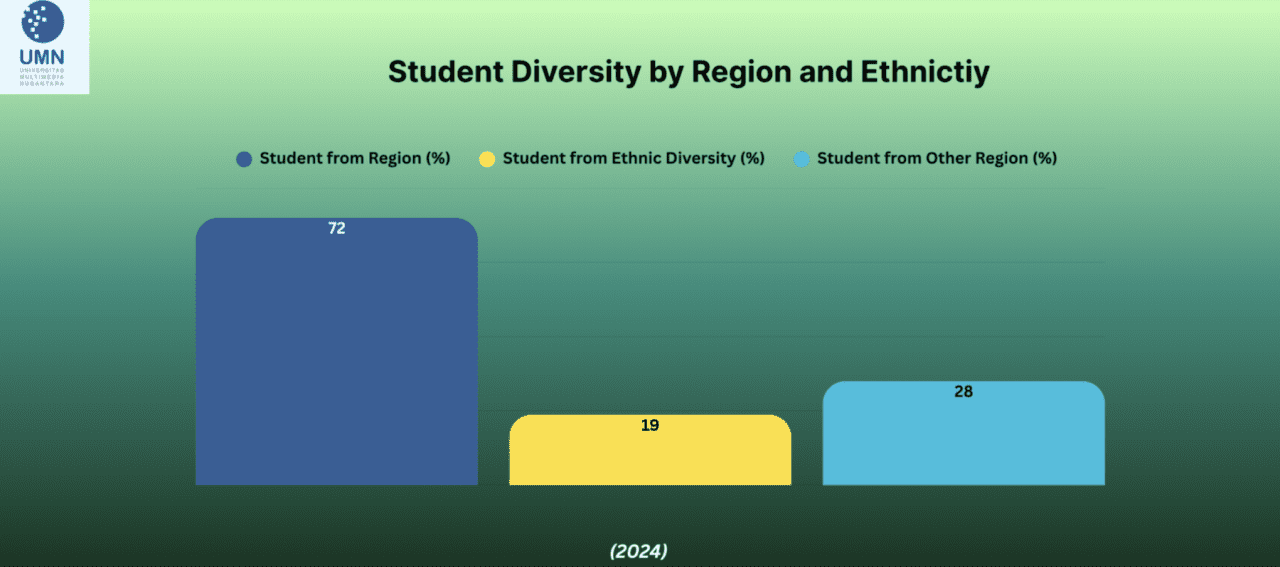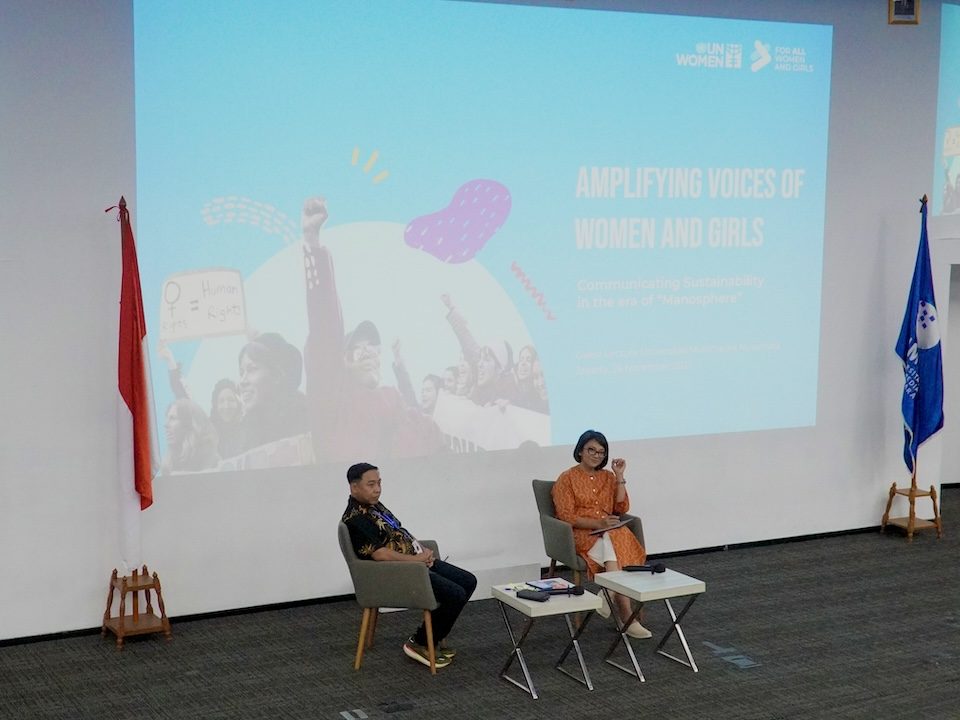
Moving Towards a Low Carbon Campus: UMN’s Real Commitment to Climate Action
December 23, 2024
Supporting Women’s Educational and Career Continuity through Accessible Childcare Facilities
December 24, 2024
(Doc. UMN)
Tangerang, Indonesia—Universitas Multimedia Nusantara (UMN) is systematically measuring and tracking the enrollment of underrepresented groups, a core requirement for achieving Reduced Inequalities. The university’s data confirms that its admissions policies successfully create equitable pathways for a diverse student population, including students from varied socioeconomic backgrounds and regional origins. This systematic approach includes tracking groups such as First-Generation Learners, Low-Income Students, ethnic minorities, women, and students with disabilities, ensuring that all students have fair access to tertiary education opportunities.
Tracking Social and Regional Diversity
UMN monitors its student body composition by origin and ethnic background, which is critical for measuring ethnic and regional inclusion. The current student data shows a significant portion of its body drawn from outside the immediate area, with 27.56% of students coming from Other Regions and 71.86% from the Local Region. Furthermore, 18.52% of the student body is tracked as having Ethnic Diversity. This detailed data breakdown proves that UMN’s admissions policy has successfully reached various ethnic groups and regions. This tracking demonstrates UMN’s ability to enroll students from various parts of the country, confirming its role as an institution open to a broad mix of backgrounds.

Student Diversity by Region and Ethnicity (bi.umn.ac.id)
Low-Income and First-Generation Student Success
The data also reveals strong representation from socioeconomically disadvantaged groups. Over half of the total student body—specifically 53.46%—are First-Generation Learners, meaning they are the first in their family to attend university. The university also successfully enrolls students from economically disadvantaged backgrounds, with 9.62% of the student body identified as Low-Income Students. To ensure there is no hidden bias, UMN breaks down this data by gender: among First-Generation Learners, 48.03% are female, and among Low-Income Students, 47.03% are female. This detailed monitoring proves that UMN’s policies actively remove financial and educational barriers for both male and female students from underrepresented socioeconomic groups.

First-Generation and Low-Income Student Data (bi.umn.ac.id)
Institutional Schemes Guaranteeing Comprehensive Inclusion
UMN’s commitment to inclusion is enforced by its core policy, the Rector’s Decree concerning the Implementation of Inclusivity Values, and Rector’s Decree No. 220/SK-R/VI/2022 which acts as the main scheme to guarantee an equitable environment for all. This decree affirms that all education and services are provided equally without discrimination based on ethnic groups, gender, ability, and physical condition, or citizenship. Addressing the needs of students with disabilities, the policy explicitly commits to facilitating students with special needs—including those with visual impairment, hearing impairment, mobility impairment, and neurodiversity—to ensure ease in the learning process. By enforcing this comprehensive decree and continuously measuring the diversity of its student intake, UMN actively works to reduce inequalities and maintain fair access to education for every underrepresented group.




